|
The denominational tension, which was a feature of the Cross Report of 1888, was certainly to the fore in the education conflict in the village for the next 10 years. The conflict between the Church party in education and those who supported non-denominational schools was a feature of School Board politics, and at the national level came to divide the Unionists and the Liberals. The supporters of the Voluntary Schools accused the School Boards of extravagance but were themselves obliged to spend more and more on their own schools to keep up with their rivals.
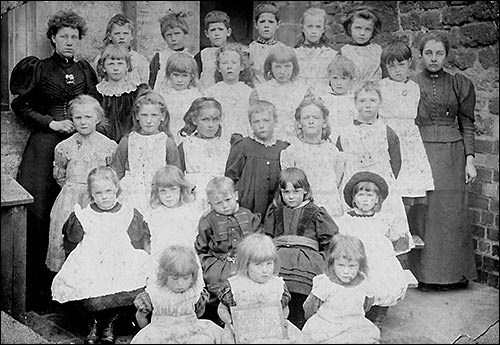 |
|
Church School Infants 1898 - Miss Drew and another teacher
|
Newspaper reports of 1898 cite the fact that the provision of schools by the Church in latter years was excessive and was an obvious attempt to dominate elementary education in the parish. The Education Department gave a definite pledge in 1893 that the Board should have first right to supply a deficiency but in fact supported the Church. In fact the Department of Education approved the building of a new Church Infant school to meet the needs of the children at the further end of the parish, without referring the application to the School Board. The School Board had endeavoured six years previously to meet the needs of the parish in this particular area to provide a school and plans had been submitted the previous year for an infant school. This was known by the Church and, with the approval of the Education Department, the decision to enlarge the Mixed School was taken, and also the Infants School adjoining the Mission Room in Finedon Road
at the far end of the parish, was approved. The School Board was informed that, “no additional school was required”. The Rector writing in the Parish Magazine at that time stated, “The current figures show that the recognised accommodation in the parish was for over 1,000 children and as the average attendance in 1898 was 430 then there will be no need for more school buildings for very many years”. (Appendix C)
The new Finedon Road Infants School was opened in October 1898 with the comment from the Headmistress regarding the children at that end of the village, “asking that the Teachers in the other school should not be allowed to follow them up and induce them to leave the New School”.
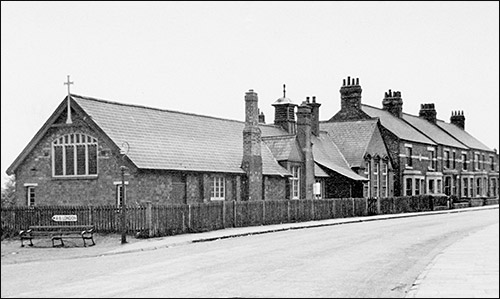 |
|
Finedon Road Infants School - Mission Room - 1958
|
Meanwhile, the controversy continued over the proposed Board School. Canvassing was carried out as to the favourability of a Voluntary or a Board School. This canvassing was carried out by the Church who, from the findings (largely in favour of Voluntary schools) declared that the agitation to provide a Board School was the work of a small party in the village who wanted to control everything. The Board School supporters, meantime, had conducted their own poll, which naturally showed the most support for a Board School but this document appeared to have been shelved by the Education Department, and no decision was made regarding it.
A newspaper article from the Kettering Leader and Observer dated 22 July 1898 states:
| “Even before the enlargement of the Church schools in 1892 there was ample accommodation in them for the whole of the children of Church parents in Burton Latimer, and the addition made to the schools at that time, and the decision come to last year to erect a new Church infant school, were really attempts to keep the whole of the elementary education of the Parish under Church control. In this they had the undisguised support of the Education Department, and the Nonconformists have been compelled in sheer despair of having justice done them, to build schools under conditions from which Parliament relieved them a quarter of a century ago.” |
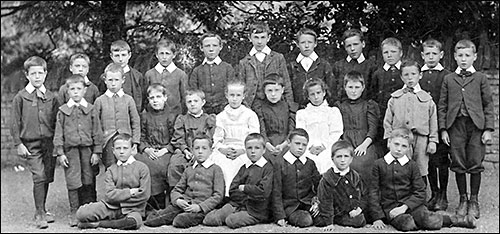 |
|
Church School Pupils 1898
|
In July 1898, the memorial stones were laid in anticipation of the building in the High Street of the new undenominational schools at a cost of £2,500 to accommodate 300 children. This followed the canvass taken by the School Board and submitted to the Educational Department showing a large majority in favour of a Board School. (Needless to say, the Church school Managers were of the opinion that many signatures had been procured under false pretences). The Nonconformists felt that as more than half of the scholars currently attending Church schools were from the Free Church, in fairness they ought to be represented on the management but the request was refused. Any young people wishing to become teachers were requested to forsake their religious principles and become members of the Anglican church. Mr Thomas Collings, Baptist Minister, was elected Chairman of the School Board and the decision was taken to build a block of schools for the Free Churchmen. An appeal was made to Free Churchmen throughout the land. For many years, working men put aside part of their weekly wage to help the cause. Although approval had not been received from the Educational Department, the Board decided to go ahead and appeared to have the financial support of not only the local people, but those from a very wide area throughout the county and even further. It seems that many towns and villages were keen to support the Board Schools but Burton Latimer was one of the first committees to go ahead.
This tension is exemplified by a letter to the local newspaper as late as 1956. To read the article click here.
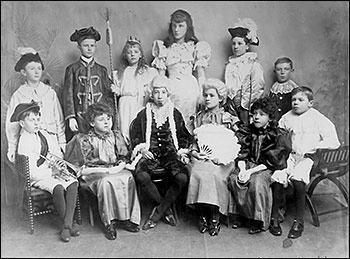 |
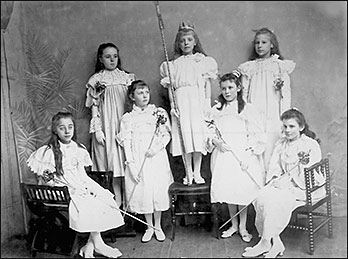 |
Church School Pantomime Cinderella c 1899
Left hand picture: Back row: George Talbutt, Arthur Barlow, Lucy Tailby, Nance Loveday, Roland Boardman,
? Darby Front row: Frank Reynolds, Horace Miller, Joe Whitney, Lily Blake, Wilf Downing, Frank Downing.
Right hand picture: L-R: Gwen Coles, Lizzie Butlin, Mabel Talbutt, Lucy Tailby, Violet Boardman,
Emma Smith, Grace King.
|
Early in 1899, five Church Managers and five Nonconformist Managers drew up an Agreement for the next five years after both the new schools had been officially recognised by the Education Department. (see Appendix D) This seemed to bring to an end the current controversy regarding the dual system of education, with the exception of continuing antagonism between Church and Nonconformists. This item dated July 1899 from the Managers’ Minutes refers to the Chapel school (presumably meaning the
Board
School
).
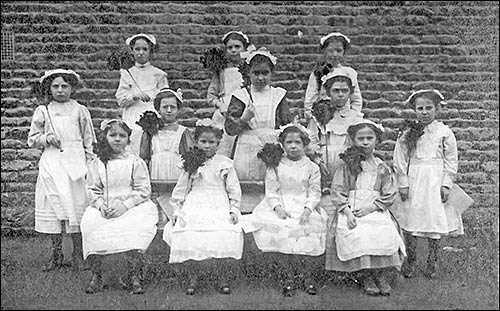 |
|
Church School girls dressed as housemaids 1900
|
|
“The Rector reported that two families had removed their children to the Chapel school during the week but one had returned. He also reported that Dunkley, the School Attendance Officer, was the primary cause of removal in one of these cases. That Dunkley’s sympathies were antagonistic to the Church Schools and that he – a Public Officer – ought to be strictly impartial. The Rector suggested (if the law permitted) that the Clerk of the School Board be requested to provide the Managers with forms for irregular attendance and that he be instructed to tell Dunkley not to put foot on the school premises. It was decided to take advice on the matter which is an extremely serious one for the school.”
|
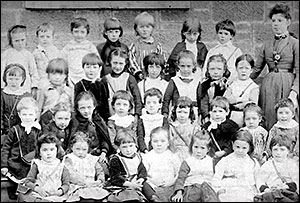 |
|
Teacher with Church School infants
Early 1900
|
|
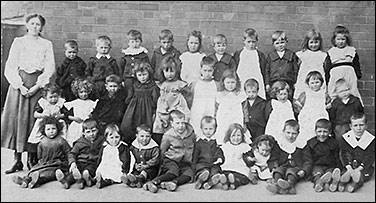 |
|
Teacher with young pupils at the Council School.
Early 1900
|
|
|







